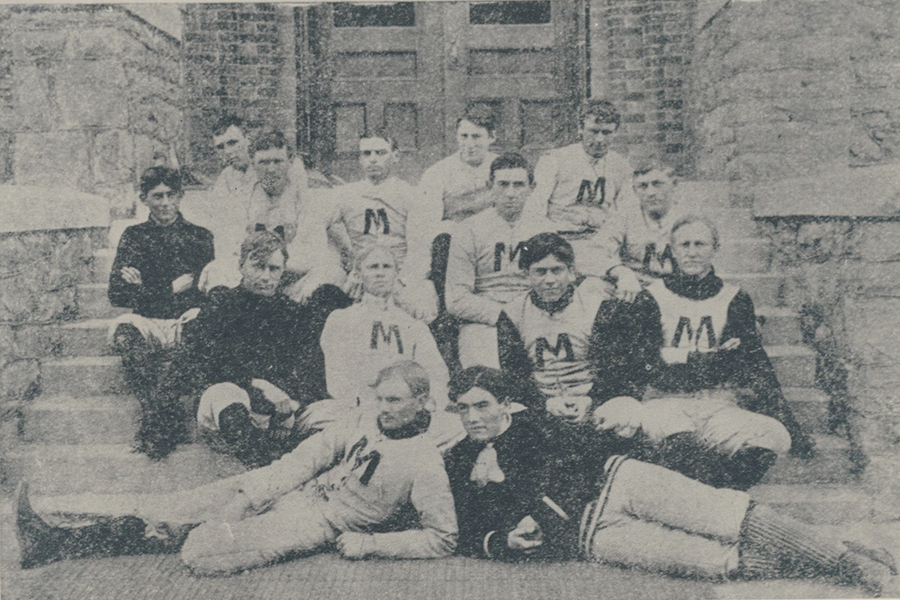On Thanksgiving Day in 1897, the University of Montana hosted the Agricultural College of the State of Montana in the first game of what would become a storied cross-state football rivalry. Both football programs were in their inaugural year of existence, and the universities themselves had only been founded in 1893, with UM opening its doors to students in 1895.
Twenty-four men turned out to play for UM’s team that first year, but it’s not clear they knew exactly what they were signing up for, according to the “Red Book,” a comprehensive 1,000-page record of the school’s athletics from 1897 to 1980 compiled by George P. “Jiggs” Dahlberg, a basketball coach and athletic director at the university.
“Interest in football was not widespread in this area,” Dahlberg recounted. “Hardly any students had ever played the game, and many had never seen a contest. No uniforms were available so many of the players used makeshift clothing.”
Newspaper articles leading up to the showdown explained the rules of football and documented public intrigue based more on curiosity and social opportunity than knowledgeable passion for the game. Meanwhile, UM carefully prepared for the big contest, with particular attention paid to ensuring a pleasurable experience for the visiting players from Bozeman. A committee greeted the “Aggies” when their train arrived, escorted them to their hotel and showed them around Missoula.
The Bozeman players also toured campus and “inspected the football grounds, noting with interest the splendid new grandstand that would seat 200 fans,” Dahlberg wrote. A reception was held to celebrate the occasion.
“The reception that evening was a happy event, and was well attended by the students, faculty members and townspeople,” Dahlberg wrote.
Thanksgiving Day brought several inches of snow, but the wintry weather didn’t dissuade an enthusiastic crowd from filling out the grandstands and surrounding grounds. Newspaper coverage devoted far more space to depicting the atmosphere than the game itself, although an archived recollection quotes one reporter’s notable description.

“A spectacular moment was when Heyfron (of MSU) secured the ball, and dodging all opponents, made a long run for the goal until the ball was planted firmly between the goal posts,” the story stated, according to the account from the UM archives. “Unfortunately, however, in his wild rush he stepped outside the field of play and the count was not allowed.”
The home team won 18-6, with Fred D. Smith, UM’s coach and a chemistry professor, suiting up and playing in the game. One report called the action “fast, furious, fierce and fair.” A Nov. 26 Missoulian article was a bit more partisan.
“We Licked Bozeman,” the Missoulian headline declared, followed by three sub-headlines taking jabs at the visiting squad. The story also offered a straightforward assessment: “The university boys were victors because they are a better team.”
The article did, however, note that the crowd had been every bit as courteous as the host players, with “every good play of the Bozeman boys … as loudly cheered as the good plays of the boys of the home team.”
From those quaint beginnings rose one of the longest-running college football rivalries in the country, often called the “Brawl of the Wild.” The Agricultural College of the State of Montana “Aggies” eventually became the Montana State University Bobcats.
Besides a losing streak from 1899-1903 and four other scattered losses, the Grizzlies dominated the first half-century of the rivalry, helping give the program an all-time record of 73-40-5 over the Bobcats. But since 1956, UM’s advantage over MSU is only 32-30, including a 16-game winning streak from 1986-2001.
